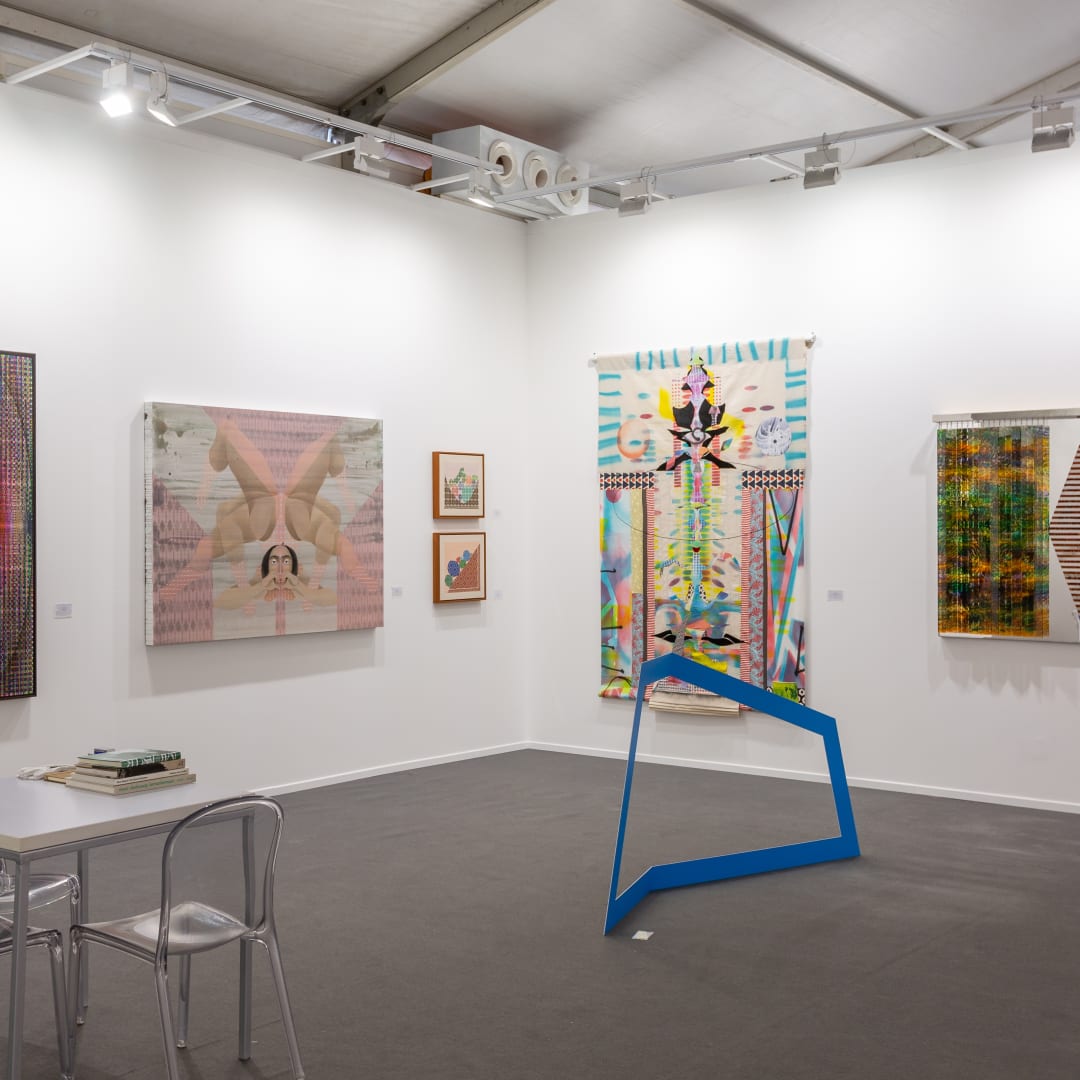The Third Line is pleased to announce its participation in the 14th edition of Art Dubai with a group presentation of works by Hayv Kahraman, Jordan Nassar, Laleh Khorramian, Monir Shahroudy Farmanfarmaian, Nima Nabavi, and Rana Begum. This year’s presentation is a myriad of different styles and materials showcasing a wide variety of artworks that reflect the individuality and uniqueness of each artist’s technique.
Hayv Kahraman’s ‘Untitled’, 2020 is part of the artist’s most recent series of works ‘Not Quite Human’. In this series, Kahraman depicts the transformation of an obedient object into a mischievous “deceptive subject”, reflecting on the concept of otherness and othering as a form of marginalization while focusing on the disparity between the immigrant and the way he/she is perceived by the white hetero-patriarchal normative same. By pushing the bounds of normativity, Kahraman emphasizes such forms of othering as exoticization, fetishization, and dehumanizing eroticism.
Jordan Nassar's hand-embroidered works explore the intersections of art, ethnicity, and the entrenched conceptions of heritage and homeland. Nassar employs geometric designs reminiscent of Palestinian tatreez, which are commonly seen on pillows, clothes, and other household textiles. The works shown in this presentation are an exercise for the artist in composition, conceptually moving from mountains to little stones or pebbles, if you will. These are an experiment in formal considerations and compositions. This style of work was something that Nassar has been imagining lately, and wanted to deviate from the usual motifs that he chooses to depict.
Laleh Khorramian’s work depicts a mythical creature, between a human and its spirit being. A depiction of form and essence that radiates a psychic role or responsibility. A carousel of disorientation and all else emerges from a kaleidoscopic spine. Something hideous. Something that would defy nature. Something that’s come to be defined as alien or immigrant or that which in some form has lost their humanity or has transversed into a mystical reincarnation. Totem of a Deity is among a series of collaged paintings on canvas, assembled from the artists paintings, hand painted prints and discarded fabric. The work is suspended like a banner, with weight at both ends.
Monir Shahroudy Farmanfarmaian’s 2018 work titled ‘Kinetic Diamond’ is a mirror mosaic representation of geometrical figures, framed by curtains of reverse-painted plexiglass strands that one imagines could oscillate in the wind. Suspended from the frame of the work are pendants that mirror the geometrical shapes of the piece from which it hangs. The reflective surfaces that host the various geometrical shapes is to realize that the mirror has been shattered in what seems like the ultimate gesture materializing both Monir’s avant-garde practice and her forever young and playful spirit. The fragmented planes also hint at the historical origins of the mirror mosaics used in Iranian architecture: in the 18th century, mirrors imported from Europe that arrived broken were salvaged by local craftsmen, who reassembled cracked elements into patterns imitating traditional Iranian tiles.
Nima Nabavi's first painted work, as well as the artist's largest to date. For the past few years, Nabavi has been working almost exclusively with technical ink pens on archival paper. While that medium enabled him to thoroughly explore and learn the intricacies of his geometric structures, the artist was also growing eager to add a deeper dimension and larger scale to his work. Using pigment paint on ultra fine Belgian linen, Nabavi painted 16,384 pixels in 16 colors, according to a predetermined coded pattern which he had envisioned to create a polychromatic burst at its central horizon. On top of this base layer, the artist drew thousands of painted lines with the same rhythmic vibrations which he had been employing in his earlier pieces on paper. These black lines, each only 0.7mm in width, intersect and combine to add an undulating, living texture to the work and a visual feel more akin to woven fabric. This piece marks the start of a new stage in Nabavi’s practice with a border array of tools and an expanded depth of possibility.
Rana Begum’s use of fundamental forms such as the square, circle and triangle act as the starting point to achieve a more complex order. She continuously investigates materials and shapes, enabling her to produce a visual experience; the sculptural object is given life and is activated by interactions with light. Tone and colour allow for freedom and an intuitive response in the process of making. The result is a work of tightly controlled compositions where the viewer is required to adjust their position, to make the work unravel. By coercing interaction, Begum orchestrates a situation where by moving around the works, the viewer witnesses the chaos of shapes aligning themselves into fleeting moments of symmetry.







